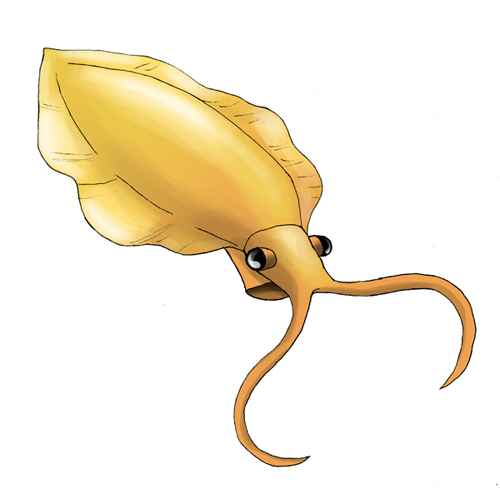- Vetustovermis
taxobox
fossil_range = fossil range|Mid Cambrian
image_caption = The very similar organism "Nectocaris "
regnum=Animal ia
genus="Vetustovermis"
species="V. planus"
species_authority = Glaessner 1979citation
author = Glaessner, M. F.
year = 1979
title = Lower Cambrian Crustacea and annelid worms from Kangaroo Island, South Australia
journal = Alcheringa: an Australasian Journal of Palaeontology
volume = 3
issue = 1
pages = 21–31
doi = 10.1080/03115517908565437
url = http://www.informaworld.com/index/795083400.pdf]
synonyms = "Petalium""Vetustovermis planus" (from Latin: "Flat, very old worm") is an soft-bodied middle Cambrian
animal . Originally found in the South AustralianEmu Bay shale , it is better known from 17Chengjiang specimens. [cite journal
author = Chen
first = Jun-yuan
coauthors = Huang, Di-ying, & Bottjer, David J.
title = An Early Cambrian problematic fossil: "Vetustovermis" and its possible affinities.
journal = Proceedings of the Royal Society, Part B
year = 2005 | volume = 272 | issue = 1576 | pages = 2003–2007
url = http://www.pubmedcentral.nih.gov/articlerender.fcgi?artid=1559895
doi = 10.1098/rspb.2005.3159] .Fossils of "Vetustovermis" show a dorsoventrally flattened body, usually 5 to 6
centimetre s, but ranging from 1.5 to 10 cm. It has an ovate trunk region and a large muscularfoot , and a head with stalked eyes and a pair of long tentacles. The trunk region possesses about 50 soft, flexible, transverse bars, lateral serialised structures of unknown affinity. The upper part of the body, interpreted as a mantle, is covered with a random array of spines on the back, while gills project underneath. A complete, tubular gut runs the length of the body.Though "Vetustovermis" was originally described as an
annelid , and later considered anarthropod , the Chinese specimens cast doubt upon those assignments. Some of the characters observed suggest that "Vetustovermis" may be related tomollusk s, but these traits are also found today amongflatworm s,nemertine s, andannelid s, so its classification is uncertain. It may not belong in thecrown group of any livingphylum .Early press reports misspelled the genus name as "Vetustodermis".
References
External links
* [http://news.bbc.co.uk/2/hi/science/nature/4156544.stm Strange fossil defies grouping] . BBC report.
Wikimedia Foundation. 2010.
